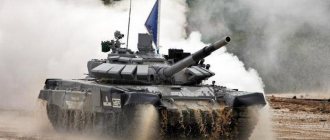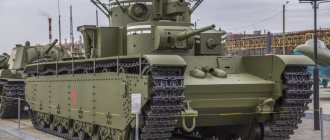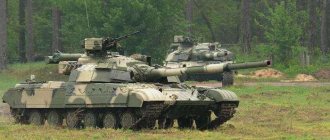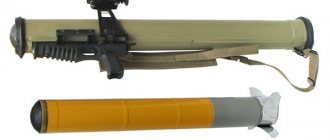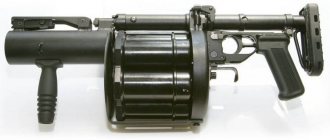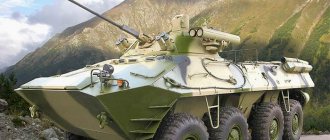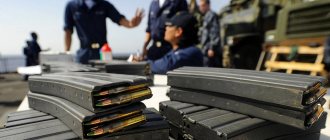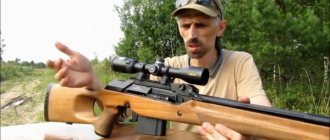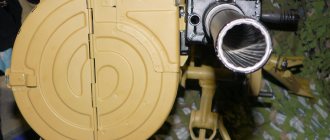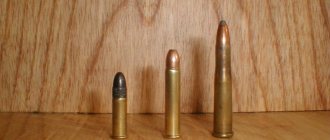An assault gun was a combat vehicle based on linear tanks, which was used to support infantry in the offensive. Their main task is to destroy enemy firing points. Not every machine could cope with such a task. For example, you need to destroy a large building that the enemy has occupied, but at the moment there is no weapon capable of destroying the building.
In such a situation, you can use heavy artillery, but it is much more convenient to install a powerful howitzer on a mobile tank chassis, which increases mobility and interaction with infantry. It was this issue that the Germans took up during the war with the Soviet Union. As a result, a new assault weapon was created, which had no analogues - the Sturmtiger.
History of creation
German industry produced a significant number of assault guns. Created on the basis of medium tanks, the Sturmgeschutz assault guns had strong armor and were equipped with 75 mm anti-tank guns and 105 mm howitzers.
During the fighting, it became clear that the power of these guns was not enough to destroy the enemy’s field fortifications. Therefore, the need immediately arose to create a new assault weapon capable of carrying powerful weapons and armor sufficient for urban combat conditions.
The development of such a machine began in 1942. It was supposed to have the designation "Ber" - bear, and use the chassis of the T-VI "Tiger" heavy tank, increased in size. It was planned to install a 305 mm gun. The project was soon rejected by the Wehrmacht military command. Despite this, Hitler gave an order according to which the development of another assault gun based on the PanzerKampfwagen VI heavy tank was carried out.
The new assault weapon was called the “Sturmtiger”.
Initially, it was planned to install a 210 mm howitzer on it. The design of this weapon was delayed - this could lead to the failure of the entire project. To avoid this, it was proposed to replace the 210 mm gun with the installation of a 380 mm RW-61 bomb launcher, which was supposed to be used in the naval forces of Nazi Germany. The weight of the RW-61 projectile is 350 kg. The bomb launcher was supposed to be placed on German cruisers.
The vehicle received high praise from Hitler himself, who insisted on the immediate deployment of production of these assault guns. But they delayed its adoption, since officers on the General Staff were of the opinion that this was a useless development in the current situation at the front, because German troops in the fourth period of the war needed to defend more often than to attack.
Despite all the objections from the General Staff, the first batch of heavy Tiger tanks was sent to the Alkett plant for conversion into self-propelled guns. This was influenced, oddly enough, by the Fuhrer of the Third Reich.
Present from near Kyiv
For the first time, the Germans used this combat vehicle, the “godfather” of which was the future Field Marshal Manstein, during the battles for France in May-June 1940.
This is not to say that Soviet intelligence knew nothing about the StuG III. They just did not particularly focus on it, limiting themselves to a short description:
The Soviet military had no idea how important and effective an attack tool these low, mobile and well-armed combat vehicles were. Meanwhile, in June 1941, on the borders of the Soviet Union there were more than ten battalions of assault guns (Sturmgeschütz-Abteilung, abbreviated as StuG.Abt.), usually operating at the very forefront of the offensive. Among them was the 197th assault gun battalion under the command of Major Helmut Christ.
Red Army soldiers pose on a captured StuG III from StuG.Abt.197, August 1941
This battalion was formed in October 1940. He received the StuG III Ausf.B. StuG.Abt.197's baptism of fire took place in May 1941, when, together with the 132nd Infantry Division, it participated in the invasion of Yugoslavia. At the beginning of the invasion of the USSR, the battalion was subordinate to the XXXXVIII Tank Corps of Army Group Center. Soon after the outbreak of hostilities, it was reassigned to the XXXXIV Corps of the 6th Army as part of Army Group South.
The same vehicle at the NIIBT Test Site, early September 1941. Damage to the chassis, as well as the letter E on board, are clearly visible
By August 15, the battalion was in the area of the city of Kanev, where protracted battles for the Dnieper began. It was here that during the counterattacks of the Soviet infantry they managed to capture at least two StuG III Ausf.B from StuG.Abt.197. The vehicle from the 3rd battery was received in running condition and took part in a photo shoot with the soldiers who captured it. The second car, which had chassis number 90 247 and the proper name Prinz Eugen, was also on the move. Judging by the damage and reports from StuG.Abt.197, the self-propelled guns were lost as a result of mine explosions. After minor repairs, they were taken to the rear of the Soviet troops.
It is often claimed that at least one of these captured self-propelled guns later went into battle with a Soviet crew. However, this is not true. Already at the beginning of September, a self-propelled gun from the 3rd battery ended up at the NIIBT Test Site. As for the vehicle with the proper name Prinz Eugen, it was first transported to the rear of the Central Front. A brief description of it was compiled there, and the trophy in it was called nothing more than “a medium German T-3 tank with a fixed turret.” The description concerned exclusively the internal and external structure of the machine. The characteristics obtained during the study approximately corresponded to the actual performance characteristics of the StuG III. Despite the speed of compiling the description, the specialists who studied the car managed to partially disassemble it, after which they put it back together.
Second captured self-propelled gun StuG III Ausf.B from StuG.Abt.197
At the NIIBT Polygon we took a different path. Instead of studying the new car in detail, a short list of its characteristics was first compiled. Summary material about the tanks of the German army was prepared by September 11, 1941. The tactical and technical characteristics reflected in it turned out to be more accurate, especially with regard to the thickness of the armor. In addition to measurements, short-term tests were also carried out at the NIIBT Test Site. During them, the StuG III Ausf.B reached a maximum speed of 50 km/h.
The same car on the left. The self-propelled gun bore the proper name Prinz Eugen
In the documents of the NIIBT Polygon, the German assault self-propelled gun was called nothing more than an “artillery tank,” abbreviated as Art-Sturm. It is unknown who “invented” this term, but the designation “Artshturm” was firmly attached to the StuG III in Soviet documents.
Self-propelled gun Sturmtiger - video
When the Kriegsmarine (Navy) abandoned its idea, the army commanders took possession of the mortar. The only suitable self-propelled platform for it was the Tiger tank. Troops on the Eastern Front needed something similar (210mm or so) to deal with difficult targets. It seemed that the Sturmtiger had a great future ahead of it, but by the time the production workers managed to put the product into production, it was already August 1944, Germany was now going deeper and deeper into defense, and therefore there was no large order. The construction was carried out by taking the Ausf E Tiger as a basis, on which specialists installed an angular armored deckhouse with an inclined frontal armor plate.
Self-propelled gun Sturmtiger caliber 380 mm. TTX. Armament. Shells. Reservation. Dimensions
The Sturmtiger was a Tiger I tank converted into an assault gun, designed to fire special shells at stationary targets. The Sturmtiger could fire both direct fire and from a position up to 6 km away. The 380-mm mortar, or howitzer, was created as a weapon for submarines to fire at ground targets, since the gun was fired using jet propulsion; this installation can be considered the forerunner of modern ballistic missiles launched from submarines.
Use in combat and modifications
The Sturmtiger has no modifications. But taking into account the operation of these assault guns, some changes were still made to individual copies of the vehicles.
The vehicles entered service with three companies formed in 1944. The Sturmtiger was first used to suppress the Polish uprising in Warsaw, which broke out in August 1944. Subsequently participating in battles on the Western Front, they showed their ability to destroy enemy tanks. There is also evidence of the destruction of three tanks of the Allied army by one Sturmtiger (with one shot).
There is unconfirmed information that Sturmtigers were also used in the diversionary operation “North Wind”.
Tactical and technical characteristics of the Sturmtiger
— Layout: Engine compartment in the rear, transmission in the front, combat in the middle. — Developer: Alkett — Years of development: 1943-1944 — Years of production: 1944-1945. — Years of operation: 1944-1945. — Number of issued, pcs.: 18
Crew: 5 people
Weight Sturmtiger
— Combat weight, t: 66
Overall dimensions of the Sturmtiger
— Body length, mm: 6280 — Length with gun forward, mm: 6280 — Width, mm: 3705 — Height, mm: 2850 — Ground clearance, mm: 485
Reservation Sturmtiger
— Armor type: Steel chromium-molybdenum rolled and cast surface-hardened — Hull forehead (top), mm/deg.: 70 / 80° — Hull forehead (middle), mm/deg.: 100 (+50) / 25° — Hull forehead (bottom), mm/deg.: 62 / 65° — Hull side (top), mm/deg.: 82 / 0° — Hull side (bottom), mm/deg.: 62 / 0° — Hull stern (top ), mm/deg.: 82 / 8° — Hull rear (bottom), mm/deg.: 62 / 48° — Hull roof, mm: 28 — Wheelhouse front, mm/deg.: 150 / 47° — Wheelhouse side , mm/deg.: 82 / 20° — Cabin stern, mm/deg.: 82 / 10° — Cabin roof, mm/deg.: 40
Armament Sturmtiger
— Caliber and brand of gun: StuM RM 61 L/5.4 caliber 380 mm — Type of gun: Rocket bomb launcher — Barrel length, calibers: 5.4 calibers — Gun ammunition: 14 rockets — VN angles, degrees: 0…+ 85° — GN angles, degrees: ±10° — Sights: Pak ZF 3×8 optical sight
— Machine guns: 1 MG 34 machine gun, 7.92 mm caliber
Engine Sturmtiger
— Engine type: Maybach HL 210 P30, 12-cylinder, carburetor, V-shaped, liquid-cooled, power 650 hp (478 kW) at 2600 rpm, displacement 23,095 cc. — Engine power, l. pp.: 650
Use in combat and modifications
The Sturmtiger has no modifications. But taking into account the operation of these assault guns, some changes were still made to individual copies of the vehicles.
The vehicles entered service with three companies formed in 1944. The Sturmtiger was first used to suppress the Polish uprising in Warsaw, which broke out in August 1944. Subsequently participating in battles on the Western Front, they showed their ability to destroy enemy tanks. There is also evidence of the destruction of three tanks of the Allied army by one Sturmtiger (with one shot).
There is unconfirmed information that Sturmtigers were also used in the diversionary operation “North Wind”.
Tactical and technical characteristics of the Sturmtiger
— Layout: Engine compartment in the rear, transmission in the front, combat in the middle. — Developer: Alkett — Years of development: 1943-1944 — Years of production: 1944-1945. — Years of operation: 1944-1945. — Number of issued, pcs.: 18
Crew: 5 people
Weight Sturmtiger
— Combat weight, t: 66
Overall dimensions of the Sturmtiger
— Body length, mm: 6280 — Length with gun forward, mm: 6280 — Width, mm: 3705 — Height, mm: 2850 — Ground clearance, mm: 485
Reservation Sturmtiger
— Armor type: Steel chromium-molybdenum rolled and cast surface-hardened — Hull forehead (top), mm/deg.: 70 / 80° — Hull forehead (middle), mm/deg.: 100 (+50) / 25° — Hull forehead (bottom), mm/deg.: 62 / 65° — Hull side (top), mm/deg.: 82 / 0° — Hull side (bottom), mm/deg.: 62 / 0° — Hull stern (top ), mm/deg.: 82 / 8° — Hull rear (bottom), mm/deg.: 62 / 48° — Hull roof, mm: 28 — Wheelhouse front, mm/deg.: 150 / 47° — Wheelhouse side , mm/deg.: 82 / 20° — Cabin stern, mm/deg.: 82 / 10° — Cabin roof, mm/deg.: 40
Armament Sturmtiger
— Caliber and brand of gun: StuM RM 61 L/5.4 caliber 380 mm — Type of gun: Rocket bomb launcher — Barrel length, calibers: 5.4 calibers — Gun ammunition: 14 rockets — VN angles, degrees: 0…+ 85° — GN angles, degrees: ±10° — Sights: Pak ZF 3×8 optical sight
— Machine guns: 1 MG 34 machine gun, 7.92 mm caliber
Engine Sturmtiger
— Engine type: Maybach HL 210 P30, 12-cylinder, carburetor, V-shaped, liquid-cooled, power 650 hp (478 kW) at 2600 rpm, displacement 23,095 cc. — Engine power, l. pp.: 650
Speed Sturmtiger
— Highway speed, km/h: 38.2 — Cross-country speed, km/h: 38.2
— Cruising range on the highway, km: 100 — Cruising range over rough terrain, km: 100 — Specific power, l. s./t: 10.6 — Suspension type: Individual torsion bar — Specific ground pressure, kg/cm²: 1.18
Meet the Sturmpanzer VI Sturmtiger
This is a real tank monster with a target of 10,000 XP. Do you think that such a margin of safety cannot be destroyed in 5 minutes of battle? You're just not yet familiar with the characteristics of the weapon.
The ammunition consists of two types of projectiles, differing in damage and effective firing range. It looks like this:
- Cumulatives. They penetrate powerful frontal armor and, with a successful hit, destroy 7,000 XP. However, their flight speed is slow, so the ammunition is only suitable for close combat.
- Landmines. They deal no more than 3,000 damage, but are more suitable for long-range shooting. In addition, they distribute a 30-meter splash within a radius of the explosion point.
Self-propelled gun Sturmtiger - video
When the Kriegsmarine (Navy) abandoned its idea, the army commanders took possession of the mortar. The only suitable self-propelled platform for it was the Tiger tank. Troops on the Eastern Front needed something similar (210mm or so) to deal with difficult targets. It seemed that the Sturmtiger had a great future ahead of it, but by the time the production workers managed to put the product into production, it was already August 1944, Germany was now going deeper and deeper into defense, and therefore there was no large order. The construction was carried out by taking the Ausf E Tiger as a basis, on which specialists installed an angular armored deckhouse with an inclined frontal armor plate.
The barrel of the rocket launcher was slightly shifted to the starboard side and equipped with holes for the release of gases from the rocket. The fighting compartment itself held only 12 shells, but with the help of a manual crane it was possible to replenish ammunition from the side of the ammunition transporter through the hatch on the roof. Each projectile weighed no less than 350 kg, so there was another crane in the wheelhouse to transport them from the ammunition storage location to the launcher breech. Different sources give completely different numbers of Sturmtigers produced - from 10 to 81 units, but the most reliable number is 18 units. They entered service with three Sturmmer batteries and took some part in the defense of Germany, thus they were not actually used for their intended purpose.
Reference point
Around the same time, the NII-48 team was studying the design of the StuG III hull. The composition of the armor, the types of connections between the sheets were determined, and the most successful solutions were identified that could be introduced into Soviet armor production:
Diagram of the StuG III armored hull from the NII-48 report
It is worth noting that even before the shelling of German tanks, work was underway on sub-caliber shells for 45 mm guns, as well as the development of a 45 mm anti-tank gun with an extended barrel. The test results only accelerated the timing of the implementation of both design solutions.
At first, the German novelty did not particularly interest Soviet designers. However, subsequently the StuG III self-propelled gun had a huge impact on the development of Soviet medium self-propelled artillery. Before it, domestic medium self-propelled guns were, as a rule, semi-open tank destroyers with a rotating turret, for example the U-20 project. But already in the spring of 1942, the designers’ priorities changed in favor of developing assault self-propelled guns with a closed wheelhouse, conceptually repeating the StuG III. But we'll talk about this next time.
Performance characteristics in comparison with analogues
The ISU-152 self-propelled gun was an analogue of the German assault gun. The Soviet vehicle was a universal vehicle, not designed for urban combat, and was more reliable. In terms of projectile power, it was inferior to the German one, but had better range, rate of fire and fast reloading.
| Options | Sturmtiger | ISU-152 |
| A country | Germany | USSR |
| Crew, people | 5 | 5 |
| Length/Width, mm | 6280/3705 | 6543/3070 |
| Armament | 380 mm RW-61 bomber, 1 MG-34 machine gun | 152-mm howitzer ML-20S, 1 DShK machine gun |
| Reservation, mm | 82-150 | 75-90 |
| Weight | 66 | 46 |
| Highway speed | 38 | 40 |
| Power reserve | 100 | 350-500 |
| Obstacles to be overcome ditch/wall, m | 2,3/0,79 | 2,5/1 |
To date, two Sturmtigers have survived. One is in the armored tank museum in Kubinka. The other is in the museum of the German city of Sinsheim.
The release of the Sturmtiger, like some other vehicles from the Wunderwaffe list, was delayed, and the hour came when the Wehrmacht was unable to conduct offensive operations, as was the case in 1941-42. This led to the fact that this assault weapon lost its main role.
The task of this vehicle was to storm enemy cities, but after the defeat at Kursk, German troops lost the military initiative on the Eastern Front, so an offensive was out of the question.
The opening of a second front by the Allied army further aggravated the situation. The main target of Allied aviation was German factories, which made it difficult for the Germans to assemble tanks. The already overburdened industry could not meet all the requirements for the production of technologically complex combat vehicles. Under pressure from circumstances, the Sturmtiger was relegated to the background.
Machine evaluation
Armament and security
The use of the latest weapon for its time on the Sturmtiger - a rocket launcher (also called a rocket launcher or rocket launcher in various sources) - provided the self-propelled gun with unsurpassed firepower in its class, comparable only to railway or the heaviest traditional artillery systems. At the same time, the rocket launcher, as well as its placement on the Sturmtiger, had a number of serious drawbacks. One of them was extremely low accuracy, characteristic, however, of any rocket artillery of that time - at a maximum firing distance of 5700 meters, the spread of hits was up to 4% of the firing distance, or a circle with a diameter of about 230 meters. However, taking into account the purpose of the Sturmtiger, this was not such a serious drawback - in urban conditions the usual firing distance was much shorter, and the average spread within a radius of 5 meters at a distance of 1000 meters made it possible to fire at such large targets as buildings or fortifications. Another drawback, related to the caliber of the system, was the extremely low rate of fire - even in the relatively spacious cabin of the self-propelled gun, 4 people could not provide it with a rate of fire of more than 1 shot per 10 minutes.
The Sturmtiger was designed as a vehicle for operating in urban environments, capable of withstanding anti-tank artillery fire from all directions. The frontal protection of early-release Sturmtigers was one of the highest among all armored vehicles used in World War II and was comparable to the armor of the Royal Tiger. The frontal part of the cabin, 150 mm thick, located at an angle of 47° to the vertical, was low-vulnerable even to the most powerful tank and anti-tank guns. Of the anti-tank guns, only the British 76-mm QF 17 pounder anti-tank gun when using a sub-caliber projectile, the Soviet 100-mm field gun of the 1944 model (BS-3) and the American 90-mm M2 anti-aircraft gun (used as a tank and anti-tank; with a sub-caliber projectile) ) had a chance to penetrate it at extremely short distances. At the same time, this part also had its own weak spot - the 380-mm bore of the bomb launcher, a hit into which, quite likely at short distances, even with the most favorable outcome for the crew of the self-propelled gun, was guaranteed to deprive the vehicle of its combat effectiveness. The lower part of the early vehicles, in addition to the basic 100-mm Tiger plate, was protected by an additional 50-mm armor plate bolted on, but later, since the armor of the base tanks proved to be quite sufficient in combat conditions, additional plates were not installed, so as not to make it heavier and an already unreliable car due to overload. Even the basic 100 mm plate, located on the Sturmtiger at an angle of 25°, provided protection against most tank and anti-tank guns at normal combat ranges. Under these conditions, the frontal armoring of the wheelhouse seemed unnecessary and overloaded the vehicle without significantly increasing its security.
380-mm high-explosive rocket "Sturmtiger"
The security of the side and rear projections of the Sturmtiger remained generally at the level of the base vehicle. If at the beginning of 1943 it provided it with reliable protection from the overwhelming majority of tank and anti-tank guns, by 1944 the development of anti-tank artillery deprived the Sturmtiger of this advantage. Although artillery systems capable of penetrating its side armor from long distances, such as the 76-mm M5 or QF 17 pounder, or the 57-mm ZIS-2, were relatively few in number, the use of self-propelled guns in urban conditions made even relatively ineffective ones dangerous in other conditions. circumstances, outdated tools. At the same time, any penetration of the armor for the Sturmtiger, which carried more than a ton of explosives on the sides of the fighting compartment, posed a significant threat.
Reliability
The Tiger, which served as the basis for the Sturmtiger, after a period of initial development that eliminated or significantly reduced many of its early problems, became a relatively reliable machine for its weight class. However, many of its shortcomings, such as the low reliability of the transmission or the tendency of the engine to overheat, were never completely eliminated until the end of its service. The Sturmtiger, in addition to inheriting these problems from the base vehicle, became 10 tons heavier in comparison with it, which led to extreme overload of the suspension. The problem was further aggravated by the uneven distribution of the load, since the bulk of the additional mass - the 150-mm front wheelhouse plate and the bomb launcher - fell on the front rollers. It was the problems with the suspension that later became the main reason for the failure of the Sturmtigers, aggravated by the increased complexity of repairs due to the staggered arrangement of the suspension rollers.
Sturmtiger barrel with a loaded 380 mm rocket
Evaluation of combat use
During its relatively short service, the Sturmtiger was almost never used for its intended purpose. The only episode when the Sturmtiger had the opportunity to take part in the assault on cities was the suppression of the Warsaw Uprising. Subsequently, although the Sturmtigers were sent more than once to perform similar tasks, the situation at the front, aggravated by the frequent breakdowns of self-propelled guns, invariably prevented this. However, in those isolated instances where the SturmTiger was used against suitable targets - buildings or fortified points - its 380mm gun proved highly effective in destroying them.
However, in the context of the retreat of German troops, such targets were rare, and in those cases when the Sturmtigers did enter into battle, their target usually became the advancing Anglo-American units. Under these same conditions, such shortcomings of the Sturmtiger as low shooting accuracy and extremely slow reloading became critical. Constant problems with reliability and shortages of ammunition, aggravated by supply interruptions, led to the fact that the vast majority of Sturmtigers were not destroyed in battle, but were blown up and abandoned by their crews.
View of the fighting compartment of a Sturmtiger captured by British troops in the spring of 1945. The 380mm bomb launcher lock is missing

